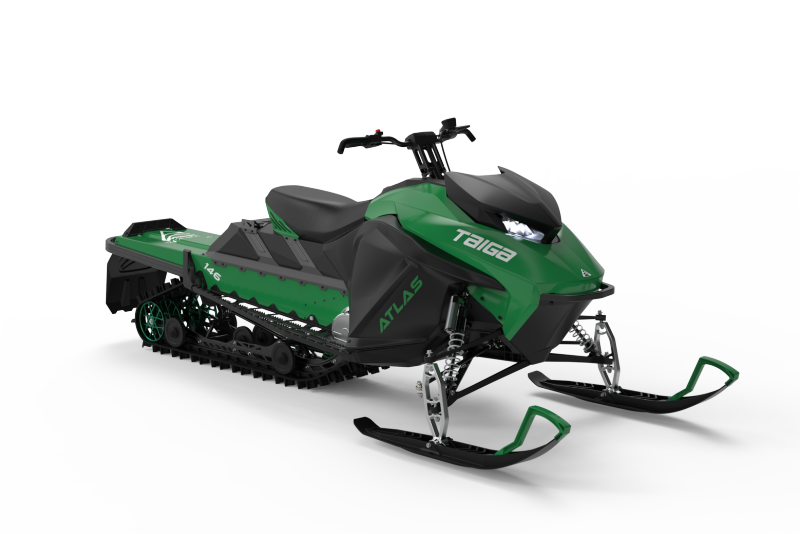While a record number of electric vehicles have hit the roads recently, a niche area of mobility is about to be transformed as the world’s first electric snowmobile makes its international debut.
The Canadian start-up Taiga Motors, based in Montreal, was set up in 2015 by the engineers Samuel Bruneau, Gabriel Bernatchez and Paul Achard. The team met while at university and began to experiment with their own electric powertrain for a race car.
Their attention soon turned to winter sports – and they’re now gearing up to introduce a clean yet powerful vehicle for the great outdoors.
“The two-stroke engines on conventional snowmobiles are up to 50 times more polluting than average cars,” says Bruneau, the company’s CEO, following visits to Scandinavia.
“Our electric snowmobile cuts emissions to zero and enables a completely different riding experience that is more connected to the elements. It’s like skiing in powder but with 100 horsepower at your disposal,” he explains.
PUTTING SNOWMOBILES TO THE TEST
Taiga Motors’ electric snowmobile comes in three different models and has been designed to outperform the polluting two-stroke engine in any usage scenario, from private recreation and safaris to snow patrol and mountain rescue.
In the quest to find a suitable test market for the all-electric vehicle, Bruneau and his team sealed a partnership with SkiStar, Sweden’s largest operator of ski resorts.
“Sweden has a strong community of snowmobile riders who enjoy their traditional snowmobiles. Taiga wants to use a collaborative approach to promote a transition to sustainable snowmobiling without diminishing enjoyment of the sport.”
We are preparing for full production and roll-out. As a Flagship Partner, SkiStar will evaluate several units of the snowmobile at their ski resorts and help us with feedback.
Silent ride, no smell
Apart from cutting emissions to zero, Taiga Motors’ electric snowmobile will eliminate both noise pollution and the unpleasant smell of exhaust that often clashes with pristine winter environments.
Unlike cars and other sports vehicles, snowmobiles require high sustained power in tough winter conditions. This means that batteries and engines can easily overheat as snowmobiles tend to go full throttle for several minutes or even an hour at a time.
Thermal management, says Bruneau, has been a major challenge in the development phase.
“We’ve had to do a lot of ground up development on battery, heating and integration systems. We’ve also built a powertrain that uses standard battery cells in order to tap into the fast-growing automotive supply chain.”
In this context, too, Sweden has provided inspiration for the company’s growth.
“We’ve been pleasantly surprised by the willingness of suppliers, partners and the government to help us as a start-up company. Sweden is a key market for us and there is a collaborative atmosphere in e-mobility. People are very open-minded when it comes to environmental solutions.”

Hitting the trails
Zero pollution, no noise or gas smells, and no engine maintenance or spark plug changes. The upside of going electric is unmistakable and Taiga Motors estimates that snowmobile owners will save around USD 2,000 per year in operational costs.
But what about battery range and charging infrastructure?
“The snowmobile’s range will be 96-140 km and it uses the same connectors as any electric car,” Bruneau points out. “You can use existing infrastructure or charge from a wall plug. We’re also looking to install fast charging points at strategic locations, so riders can stop for lunch or coffee and go back out on the trail after twenty minutes.”
Taiga Motors and SkiStar are currently testing the zero-emission snowmobile across Sweden’s largest alpine destinations.




